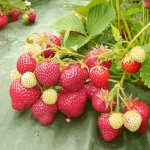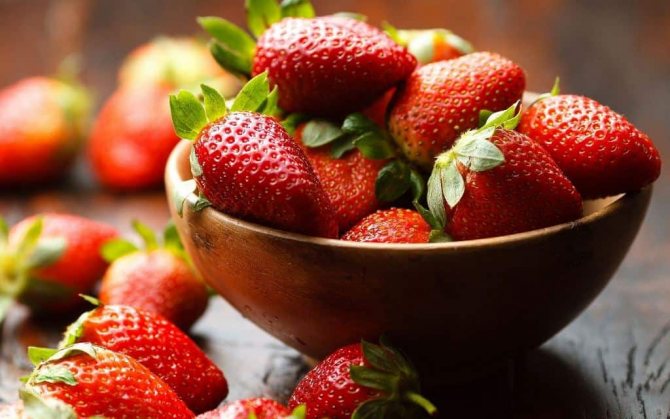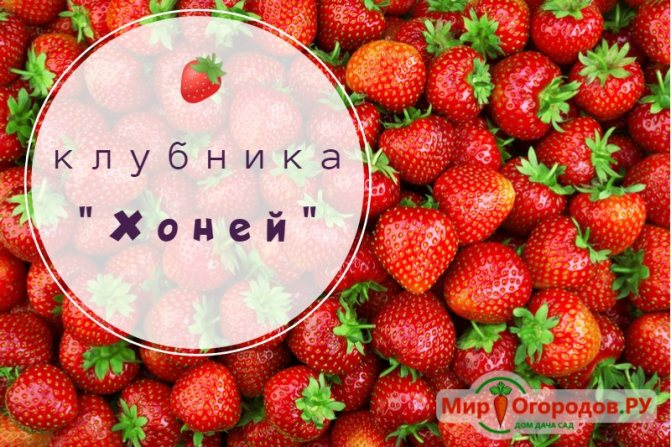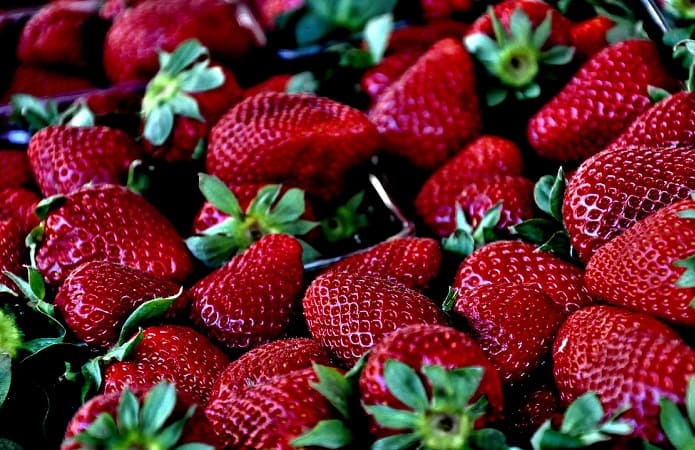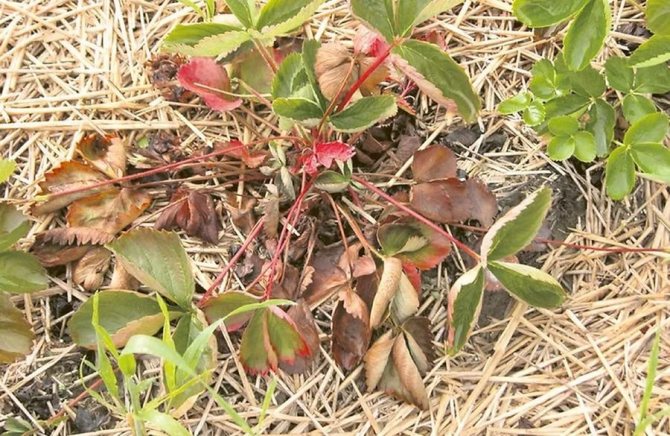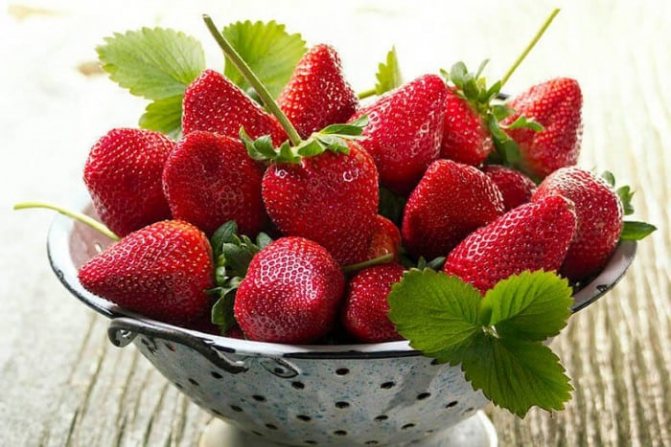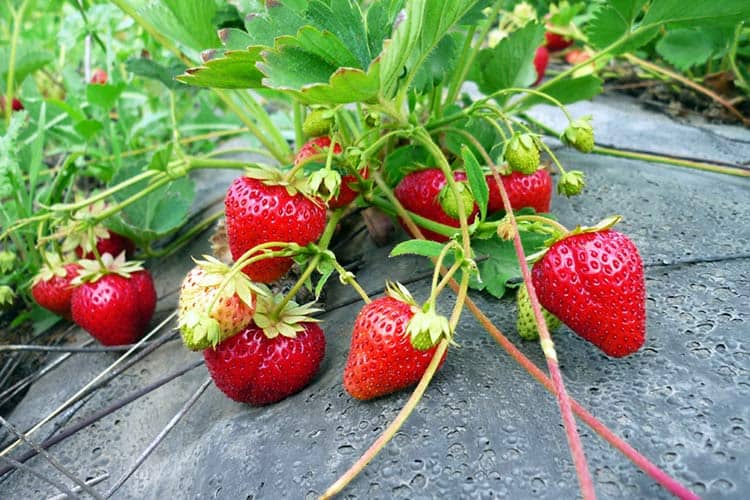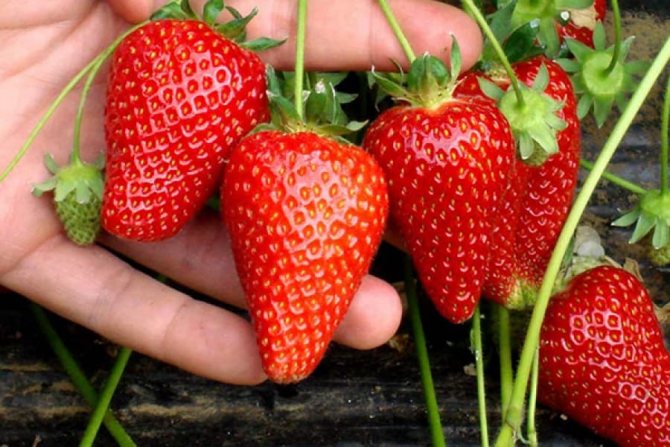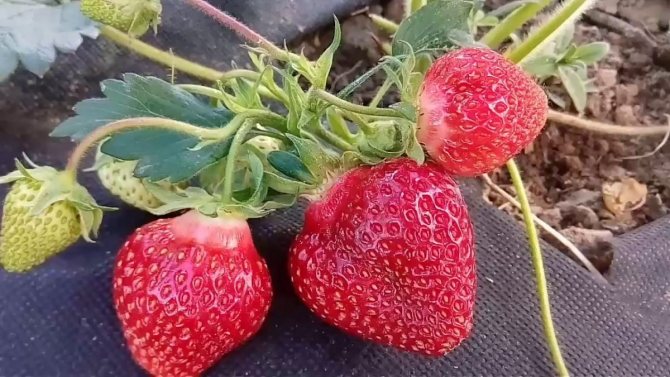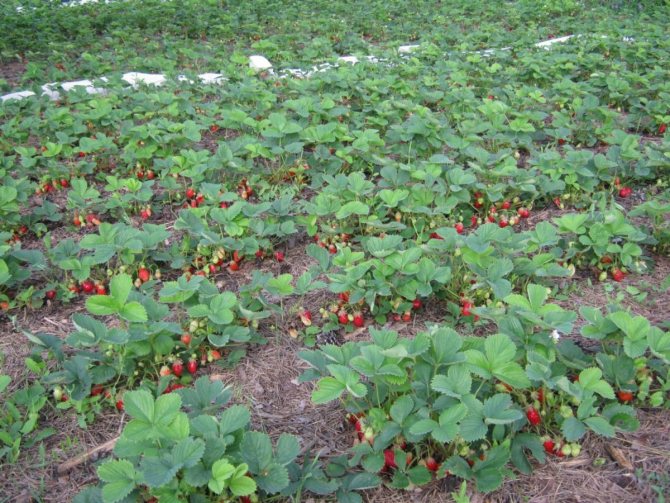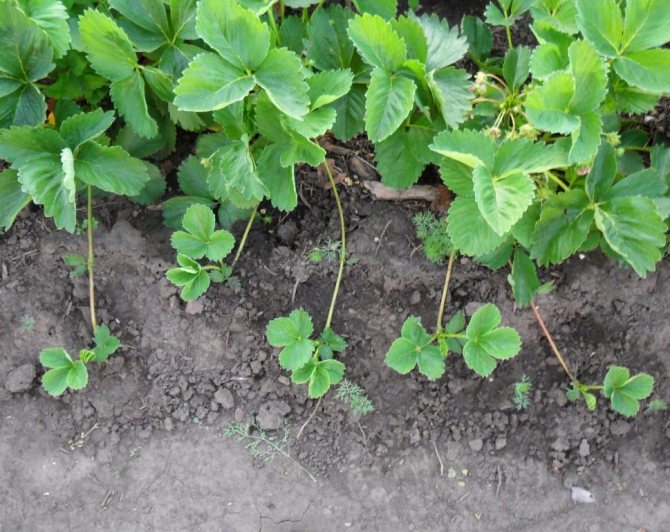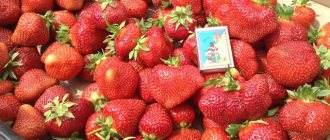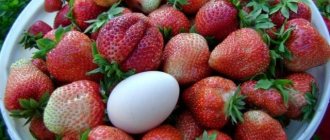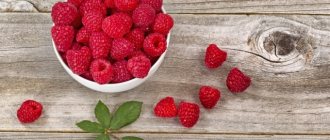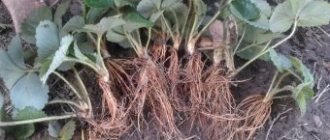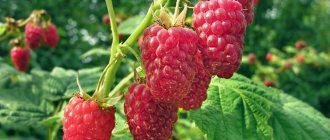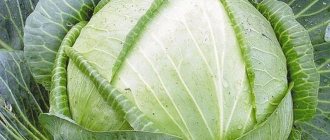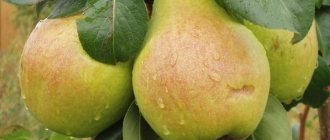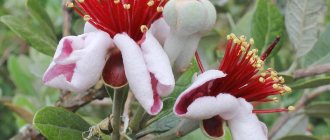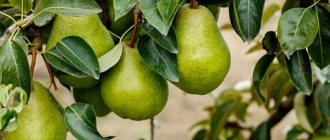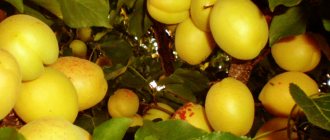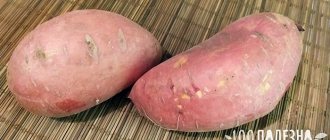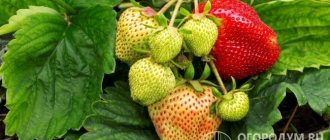Description of the variety
The culture was bred in the United States of America in 1979. Weibrant and Holiday varieties were taken as parental specimens. During its existence and passing various tests, the variety has collected excellent reviews from gardeners and summer residents. Despite its rather long existence, the culture was added to the State Register of the Russian Federation only in 2013. Tests on the variety were carried out at the Federal Scientific Center for Horticulture, Viticulture and Winemaking in the North Caucasus.
Did you know? 100 g of strawberries contain 98% of the daily value of ascorbic acid.
The Honey Strawberry is a strong, upright plant with abundant foliage. The leaf plates are medium and large in size. Their surface is pubescent. Ribbing and wrinkling are moderate. On the edge of each leaf, there are wide obtuse teeth. The mustache is not long. The rate of their formation by the plant is average. Flowers on bushes are formed by both sexes, therefore the variety does not need pollinators. Semi-sprawling inflorescences, including a large number of large white flowers. Peduncles are medium-sized, thick. They stop growing below the leaf plates or on a par with them.
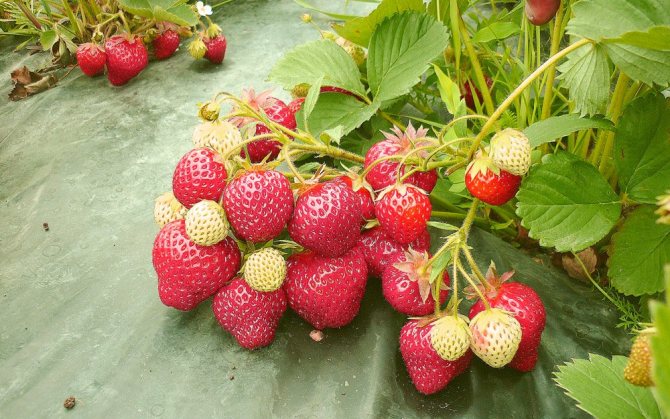
To speed up the onset of ripening by several weeks, you can cover the bed with agrofibre. This will create the necessary conditions for active fruiting.
Strawberries or strawberries?
Of course, the name strawberry has long been rooted among the people, in relation to bushes with large juicy berries, while strawberries are considered a plant with small and very fragrant berries with sourness, as in the forest. And the phrase "garden strawberry" baffles some gardeners. To understand the names, in fact, is not difficult.
Strawberries are wild varieties of berries that have migrated to gardens from forest edges and meadows. Its berries are comparatively larger than strawberry ones, but they are inferior to what we used to call strawberry ones. They are almost always sweet and covered with a little fuzz. Conical or spherical in shape. Often such a plant is called a wild strawberry - it rapidly multiplies in the garden, if not looked after, and forms a green carpet. At the same time, there are few berries on it, so this culture is not particularly popular.
Strawberries - the berry queen of the forest - everyone knows. But garden strawberries are those very large berries under dark green large leaves. This is a cultivated version of the forest strawberry. She gives a rich harvest (of course, with proper care), and some specimens of berries, without exaggeration, can take up half of the palm. And Honey is just a garden strawberry. So we will call it further.
Photo Gallery: Comparison of Strawberries, Plain and Garden Strawberries
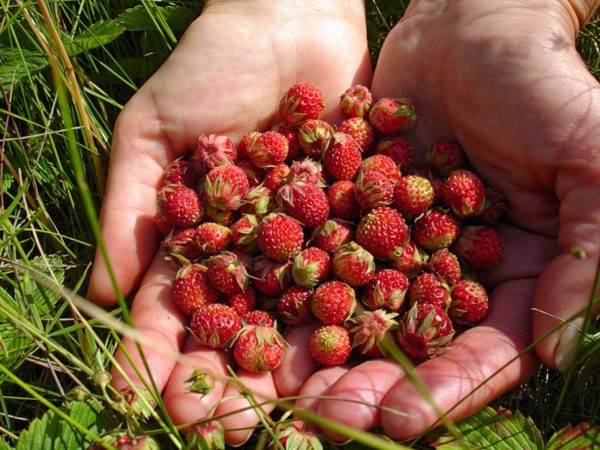

Strawberries are low-yielding, but their berries are a masterpiece of aroma and sweetness.
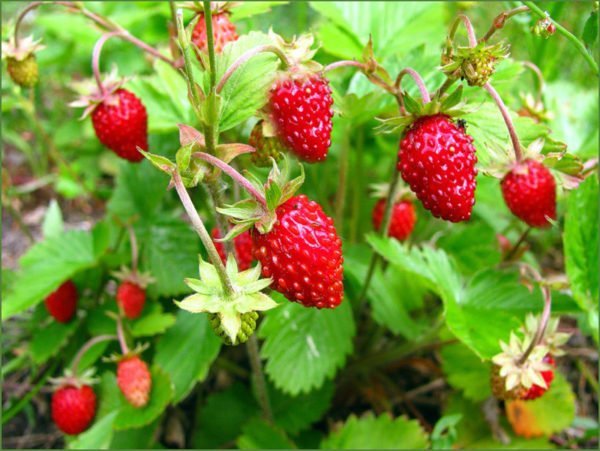

Common strawberry produces small and very fragrant berries.
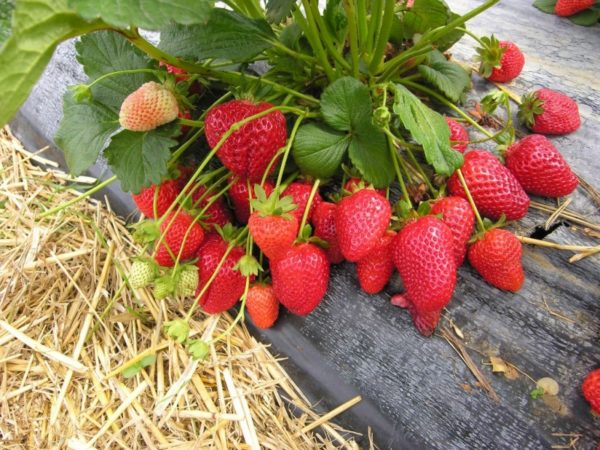

The full name of this culture is large-fruited garden strawberry.
Characteristics of berries and yield
The main characteristics of the Khonei strawberry variety:
- flowering period and its duration - the plant blooms for 15 days, this process begins early, in mid-late April;
- ripening period - early, the first berries ripen at the end of May;
- fruiting period - short, the whole crop is harvested in 3 stages during 1 month;
- winter hardiness - high, tolerates frosts well - up to 15 ° C without shelter, when the temperature drops, shelter is highly desirable;
- tolerance to diseases and pests - medium and above average, depending on the quality of care and the region of cultivation, with high humidity it is affected by gray rot and leaf spot, powdery mildew, verticillosis, from pests it is exposed to the invasion of strawberry weevil, tick;
- drought tolerance - medium;
- period of active formation - begins in mid-June, it is at this moment that attention should be paid to the rationing of their number;
- demanding lighting - with a lack of light, the fruits become smaller, the quality of taste decreases;
- term for replacing planting material - every 4–5 years;
- exacting soil - grows well and bears fruit on chernozems, however, cultivation on other types of soil is also possible, but the site should be well fertilized with organic matter and minerals;
- yield - 400-500 g per bush, 12-15 t / ha.
Did you know? There are about 200 seeds on the surface of one strawberry fruit.
The fruits of this variety are rather large, weighing 20.2–45 g. Their shape is regular, conical. The neck is pronounced. In the stage of physical maturity, the surface of the berries is dark red, shiny. The pulp is one tone lighter, rather dense structure. The aroma is poorly expressed.
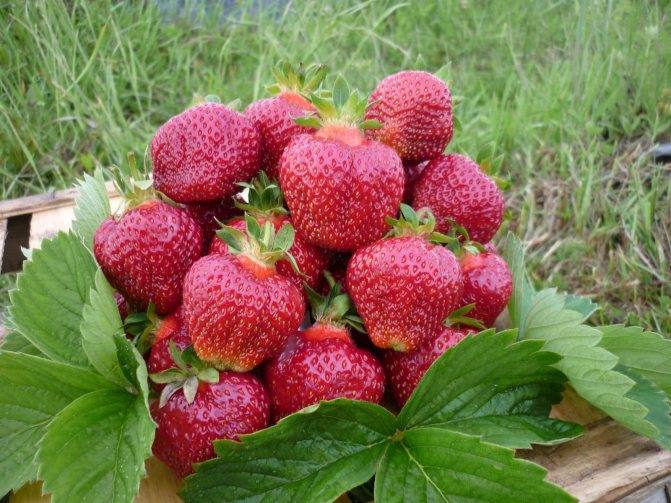

On the surface of the berry there are yellowish achenes. They are weakly impressed into the pulp. The taste is harmonious, sweet and sour. When picked at the stage of technical maturity, the taste is dominated by acid. If the rules of agricultural technology are violated, bitterness may appear.
- Advantages of the Honey Strawberry variety:
- high productivity;
- early ripening;
- high winter hardiness;
- the possibility of growing in almost all regions;
- good resistance to diseases and pests with proper agricultural technology;
- fast yield of fruits, which allows the variety to be used for commercial activities;
- good transportability of fruits.
- Cons of strawberry variety Honey:
- exactingness to lighting and soil composition;
- mediocre taste when harvested at the stage of technical maturity;
- poor tolerance to high humidity;
- with a lack of light or improper care, the berries acquire a bitter taste.
disadvantages
With all the advantages, the Honey variety could be called ideal, if not for some disadvantages.
- Very sensitive to moisture, do not tolerate either lack or excess of water.
- Having a powerful root, however, suffers most from diseases of the root systemthan from everyone else.
- With all the visual appeal cannot boast of sweetness and pronounced aroma, requires full ripening to reveal the true taste, but then transportability is reduced.
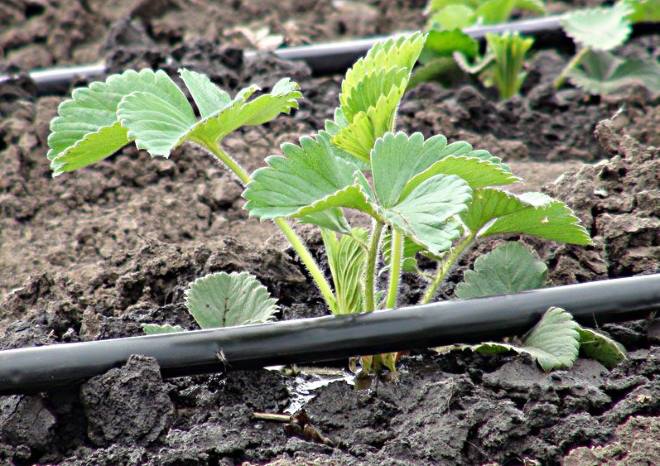

Controlling soil moisture will be much easier with drip irrigation.
Growing features
High-quality planting material is needed to obtain good yields of the Honey variety strawberries. The purchase should be made from a familiar breeder or in a specialized nursery. When buying, you should pay attention to the following nuances:
- roots - must be elastic, dense, without signs of lethargy and dryness, mold, rot;
- sheet plates - evenly colored;
- ground part - should consist of 5–6 leaves, have several annual shoots 8–10 mm thick.
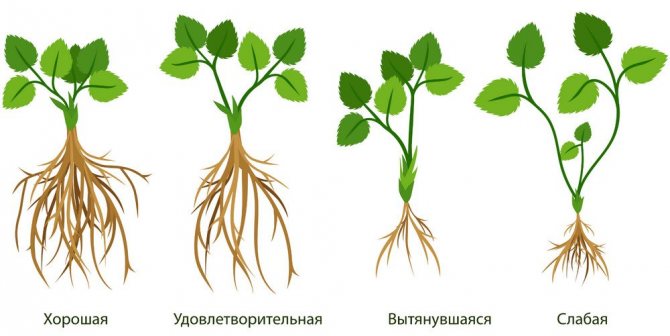

Landing dates
Early variety, therefore, fruiting buds in plants are laid at the end of summer. Accordingly, to get a harvest in the first year, you need to plant in mid-July-early August. But if the harvest in the first year is not a prerogative, then the plants can be planted in the spring, when the soil warms up to + 15 ° С.
Important! When grown in a greenhouse, strawberries can be planted all year round.
Choosing a landing site
A place for planting strawberries should be chosen with a leveled surface, well-lit, protected from the north wind. You should not select low-lying areas - plants on them will suffer from an excess of moisture. When choosing a place, you should follow the rules of crop rotation. Good predecessors for this crop are legumes, grains, onions, and garlic.
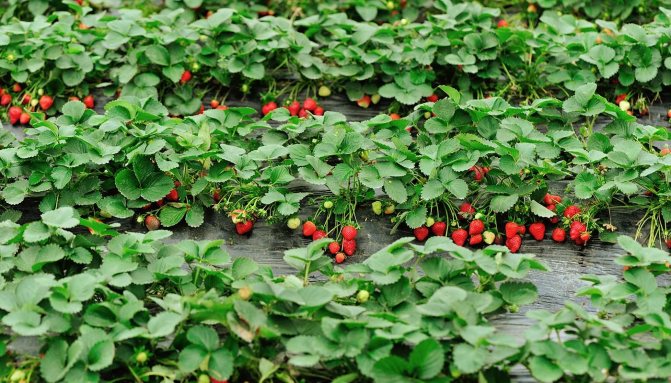

Site preparation
The soil in the area chosen for planting strawberries must be prepared in advance. Only chernozems with a good fertile layer do not require special preparation, in addition to deep aeration. For summer planting, the preparation of the site begins in the spring, for spring - in the fall. At the initial stage, digging the soil onto a shovel bayonet (20-25 cm) is carried out. Then it is treated with a solution of copper sulfate of 3% concentration for disinfection.
Important! It is only necessary to land in cloudy weather or in the evening. Otherwise, bright sunlight will destroy the plants.
A week later, for each 1 m², add:
- 10 kg of sand;
- 20 kg of peat;
- 20 kg of humus or rotted manure;
- 70 g superphosphate;
- 30 g of potassium nitrate.
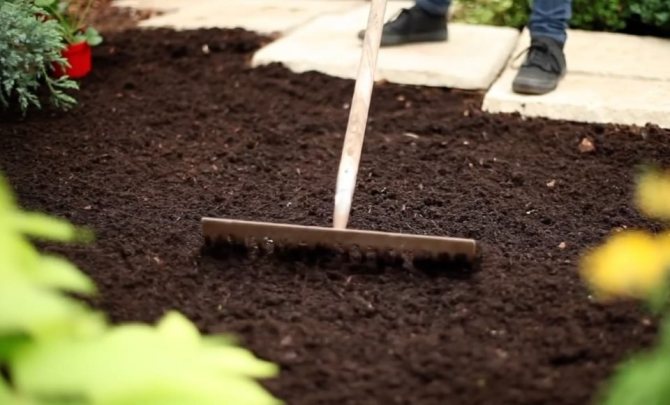

After fertilization, the soil is once again dug to a depth of 20 cm. A month before planting, 20 kg of compost and 600 g of wood ash are added to each 1 m², then they are dug onto the bayonet of a shovel.
Read more on how to fertilize the land in autumn for strawberries.
Step-by-step landing scheme
Plants are planted at a distance of 20 cm from each other. A step of 60–70 cm is left between the rows.
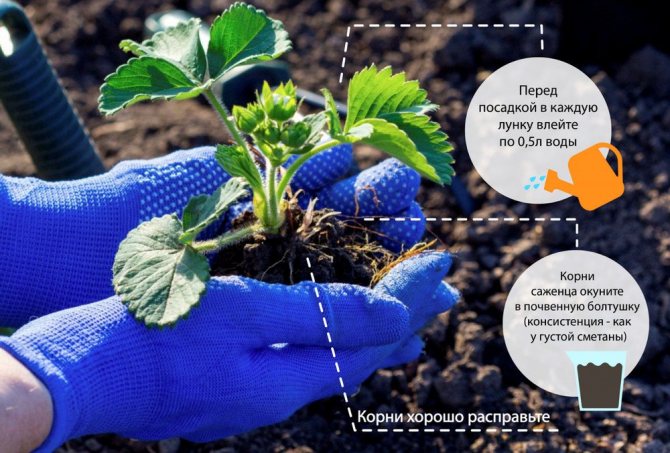

Step-by-step instructions for planting strawberry bushes:
- Shorten the root system to 10–12 cm.
- Dip in a chatterbox - add 0.5 liters of mullein, 1 kg of clay to 10 liters of water.
- Dig holes 15 cm deep and 25 cm in diameter.
- Mix the soil from the holes with superphosphate - take 20 g of the substance for 10 kg of soil.
- From the resulting substrate, form elevations at the bottom of the wells.
- Arrange plant roots on elevations.
- Fill in the holes, not reaching the top of 5 cm, pour 1.5 liters of water, fill up the earth until it is completely filled. Make sure that the root collar is flush with the soil.
- Compact the soil around the plants, cover it with sawdust or compost.
Video: planting strawberries
Gardeners reviews:
Honey strawberries are demanding for watering, but in turn, with good care, rewards a large harvest with large and juicy fruits. An excess of moisture, as well as drought when growing this strawberry, is unacceptable. If you follow all the rules for care, you can get a crop that pays for the costs several times.
I have been growing the Honey variety in a greenhouse for about 10 years. Good care allows you to get the berries closer to April. More than 400 grams of berries are harvested from one bush during the fruiting season. Tasty and aromatic berries are bought by regular customers, and every year they expect a new harvest. Thus, growing strawberries allows you to receive an annual income, which, if desired, can become the main business.
Care and protection against diseases and pests
Caring for your crop won't be a big deal. Strawberries will need fertilizing only after 2 years. For this period, it will be enough for her that was introduced during planting and preparation for it. In the future, top dressing is applied 3 times a season at the root. A mullein solution is used for this (proportion 1:10).
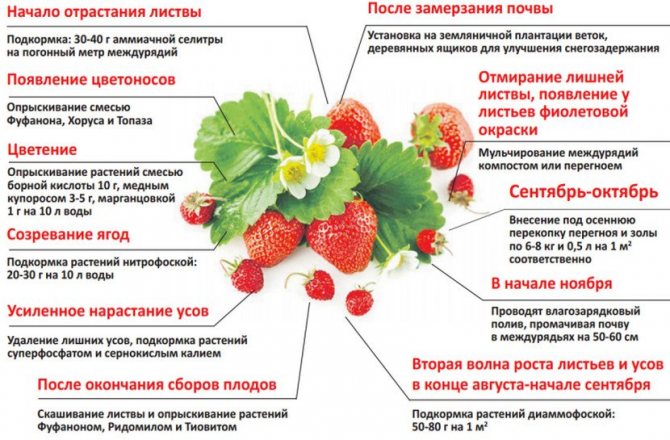

Each plant takes about 1 liter of fertilizer. Fertilizer is applied for the first time before flowering, then immediately after it and after another 10 days. Wood ash can be periodically added to the water for irrigation (1 tbsp per 10 liters of water).
You will be interested to learn about feeding strawberries after harvest.
Watering is carried out 2 times a week. 1 liter of water is added under each bush. After each moistening of the soil, it is necessary to loosen, and then mulch the soil with straw.
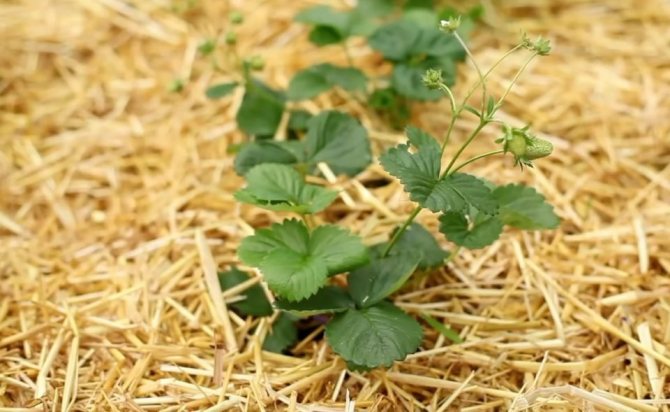

When fungal diseases such as powdery mildew, verticillosis, spotting appear, the first step is to remove the affected parts of the plants. Then carry out processing "Fitoverm" according to the instructions. If pests have settled on strawberry plantations, the soil and the plants themselves are powdered with wood ash or tobacco dust.
Learn more about processing strawberries with copper sulfate.
To prevent the spread of diseases and pests, before flowering, they are treated with "Fitosporin" (diluted in a proportion of 5:10 with water), and in mid-September with copper sulfate 1% concentration. Spraying is carried out on the ground part of the vegetation and soil.
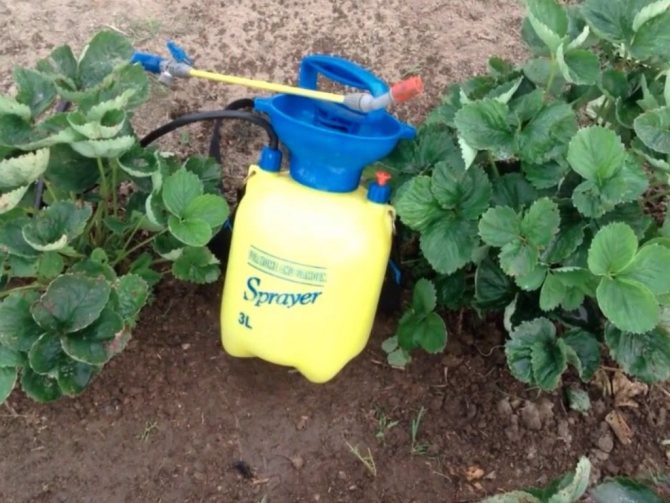

Immediately after the end of fruiting, the ground parts of the plants are cut off. The watering regime remains the same. In mid-September, 10 g of superphosphate is applied for each 1 m², the soil is loosened, mulched with compost to a height of 10 cm. 3 weeks before the onset of cold weather, the plantings are covered with spruce branches or foil.
Harvesting and storage
The fruits of this variety tolerate transportation very well. The berries are picked by hand. Separate them from the bushes along with the stalks. Placed in boxes made of plastic or wood in one layer. The bottom of the container is pre-lined with paper. In a cool, dark room, this strawberry variety stays fresh for 7-10 days.
You will be interested to learn about the beneficial and harmful properties of frozen strawberries.
Berries are actively used for various types of processing:
- jam;
- paste;
- marmalade;
- sauces;
- juices;
- mashed potatoes.
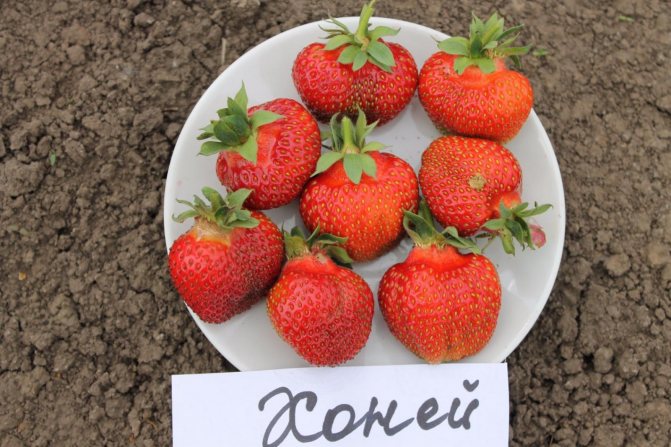

The Khoney strawberry variety is attractive for its high yield and frost resistance. With the right approach, it can be cultivated in any region of the country.
Reproduction
Strawberries of this variety are propagated by whiskers, seeds, dividing bushes.
For mustache breeding, you need to do the following:
- Select several bushes, cut off the flower stalks from them so that the mustache grows faster.
- Pin the shoots to the ground.
- Unwrap mulch in areas where shoot roots are expected to form.
- When 5 leaves are formed on the shoot, separate it from the mother plant, plant it in a permanent place after 7 days.
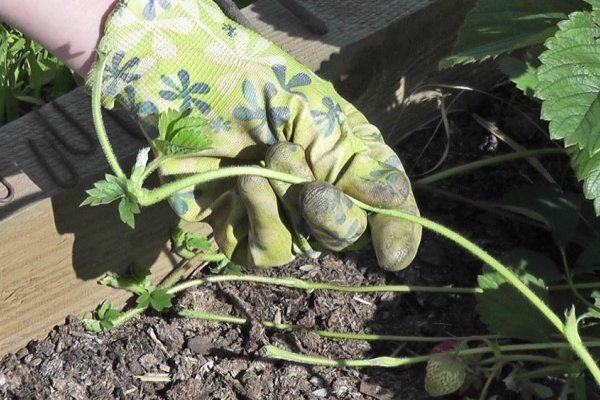

If you propagate by dividing the bush, you must do this:
- Choose strong bushes with 2-3 rosettes and dig them out.
- Shake off the soil from the roots, divide the plant with a sharp knife according to the number of horns.
- Sprinkle with crushed charcoal the places of the cuts.
- Plant bushes in the chosen place.
Seed propagation is difficult, in which case it is necessary to purchase planting material from a reputable store.
Seedlings are grown from seeds like this:
- Planting material is planted in early March, after soaking the seeds in Epin.
- For seedlings, a mixture of river sand and fertile soil, taken in equal volumes, is prepared. It is permissible to use peat tablets.
- The containers are filled with the mixture to a depth of 10–15 cm, sand is poured on top with a layer of 2 mm. Sprinkle the soil with water, sow seeds, maintaining an interval of 5-10 cm. They need to be pressed into the surface layer. When using a peat tablet, it is moistened with water, a seed is pressed into it, and placed in a container.
- The pots are closed with lids, put in a warm place.
- Every day, the containers are ventilated, gradually increasing the gap formed by the slightly open lid.
- When the plants have 3 leaves, they can be planted in a permanent place. Before this, the seedlings are taken out for hardening in the air for several days and left for 10 minutes.
Important! It is important to water the strawberries of this variety in a timely and metered fashion, since underfilling and overflowing are unacceptable for it.

